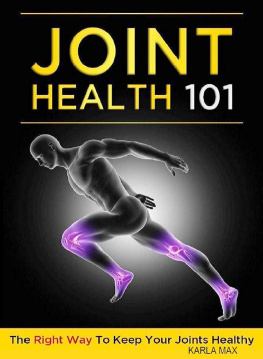Sacroiliac Joint Pain - Simple, Effective Exercises and Natural Remedies
The SI joint is composed of the sacrum bone and the two ileum bones on both sides. The sacrum is made up of five vertebrae which are anatomically fused together and the ileum forms the pelvis. The joint is held together by a large ligament. The primary function of this joint is to support the weight of the upper body in the standing position, the available range of movement is very little.
The SIJ is a strong and stable weight-bearing joint that permits very little movement due to its natural structure. The main role of the SIJ is to allow forces to be transmitted effectively through the body, absorbing impact from the legs to the spine during activities such as walking, running and jumping.
Sacroiliac joint dysfunction happens when pain, injury or inflammation occurs.
Sacroiliac joint dysfunction can be caused by different conditions. As with other joints in the body, the sacroiliac joint can also be affected by arthritis. Osteoarthritis, an arthritic condition can occur when the cartilage of the joint becomes thinner. The bone will then rub with each other and could lead to arthritis, which is the number one cause of SI dysfunction. Other condition that may cause SI dysfunction is direct impact to the joint like in falls. Due to postural changes and abnormality in hormones brought about by pregnancy, SI dysfunction is common in pregnant women.
Abnormal kinematics in the joint can lead to pain, and this is true in people with leg length discrepancy, or when one leg is longer than the other. Systemic disorders may also affect the SI joint like gout, RA (rheumatoid arthritis), ankylosing spondylitis and psoriasis.
Pain in SI dysfunction is felt in the lower back region but can extend up to the buttocks. Intensity of pain increases when the back is extended like in walking, lying down or standing. Pain can be perceived in the hips and groin area. During physical examination, pain can be reproduced by giving stress to the joint.
Contents
- Sacroiliac Joint Pain Causes
- Posterior Pelvic Pain (Sacroiliac Joint Pain) In Pregnant Women
- Sacroiliac Bones and Back Pain
- Pain Relief With SI Joint Pain Therapies at Home
- Radiofrequency Ablation of the Sacroiliac Joint
- Altered Breathing Patterns in Chronic Joint & Back Pain
- Treatment Options for Sacroiliac Joint Disease
- The Magical Remedy
- The Right Vitamins for Joint Pain
- Exercises - The Best Treatment for Sacroiliac Joint Pain
- Natural Ways to Get Rid of Joint Pain and Inflammation
Sacroiliac Joint Pain Causes
As the number of baby boomers grow at a rapid pace, so does the rate of those having to deal with Sacroiliac joint pain. Sacroiliac joint pain is affecting a growing number of individuals. So, just what is Sacroiliac joint pain? What causes it? And what is the best way to prevent or cure it?
Sacroiliac joint pain is typically discomfort that is centrally located in the lower back and hip area. Severe cases of Sacroiliac back pain can spread into the legs and groin. Subluxation of the joint is a common cause of joint pain. This can be defined as a partial dislocation of the affected bones, causing ligament hyperextension. For obvious reasons, these areas are susceptible to inflammation, and discomfort. This inflammation can result from a number of issues.
Trauma to these areas, genetics, illness, infection, or even excessive stress can all be joint pain causes. This ultimately affects surrounding tissue as well as the actual ligament. As a result, swelling causes severe pressure on surrounding nerves, resulting in joint pain. These areas are more susceptible to pain when compared to the other areas of the body. This is because these areas are commonly surrounded by nerves. These nerves are connected and extended into our legs and hips, which often results in the spread of inflammation and or pain.
Some of the identifiers and symptoms in determining joint pain causes can be vague ones. Discomfort in the lower back can be identified as a cause, especially when the pain spreads to other areas. Also increased back pain due to small movements, a cough, a sneeze, or other minute issues are often a good indication.
Weaknesses in the affected area, numbness or stiffness are also symptoms of back pain. If this is the case you should seek medical advice from a qualified physician specializing in Arthritis or related health issues. For the do it your selfer it is important that you do not try to self diagnose. Serious health issues require serious treatment, or at least analyses. Delaying the dreaded visit to a doctor will only prolong your pain and treatment. The more proactive you are the quicker you can get back to normal.
There are still many uncertainties, when it comes to the Sacroiliac joint pain causes. It is yet to be determined if the pain is a result of the area around the joint or ligament. The Sacroiliac joint irritation can be caused by anything from gout to rheumatoid arthritis. If you are experiencing lower back pain. It is recommended that you sit down with a qualified doctor determine just what may be causing joint pain.
After joint pain causes can be determined, along with specific location adequate treatment can be administered. This may include exercises such as yoga, which has had a number of successful results. Medication proficient in eliminating or lowering inflammation. Or even herbal supplements might prove suitable for eliminating back pain. A specialist focusing on joint pain issues can help and provide guidance.
Posterior Pelvic Pain (Sacroiliac Joint Pain) In Pregnant Women
Posterior pelvic pain (PPP) is pain felt at or near the sacroiliac joints of your pelvis as a result of sacroiliac joint dysfunction. These are joints located at the 2 dimples of the lower back. The pain often feels deep within your lower back and can occur on one or both sides of your back. In some cases, pain radiates down to the buttock and the back of the thigh.
While pain may begin at any time during pregnancy, PPP on average begins in the 18th week of pregnancy and becomes more intense as the pregnancy progresses. The pain usually spontaneously resolves within 3 months post delivery. But in some cases it can become chronic and disabling.
The SIJ is kept stable through two mechanisms:
Firstly, the rough, groove-like connecting surfaces of the sacrum and ilium interlock and help stabilise the joint, like two pieces of Lego together.
Secondly, the SIJ is further strengthened by a complex mesh of ligaments and muscles such as the core stabilizers. These core muscles, such as the transversus abdominis and multifidus which surround the SIJ, act as active stabilizers by actively contracting to create a compressive force over the SIJ, gripping the joint firmly together. They act as a natural corset by providing that compression around the lower back and pelvic region -much like wrapping your fingers around the two Lego pieces, keeping them firm and tight.













